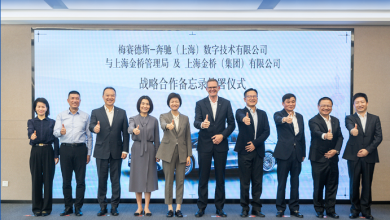Global In-vehicle Infotainment Market (2021 to 2027) – Government mandates on telematics and e-call services presents opportunities

The “Global In-vehicle Infotainment Market” report has been added to ResearchAndMarkets.com’s offering.
The in-vehicle infotainment market is projected to grow from USD 20.8 billion in 2021 to USD 38.4 billion by 2027, at a CAGR of 10.8%.
The display unit/infotainment unit segment is expected to lead the component segment
The display unit/infotainment unit is made of TFT (Thin Film Transistors) or LCD (Liquid Crystal Display) and provides the user with different kinds of information (navigation, weather forecast, internet, etc.) and entertainment (video and audio). Generally, the size of the display/infotainment unit ranges from 2-20 inches. The entry-level car display unit ranges from 3-5 inches. Most mid-segment cars have an average screen size of 7 inches. However, the need for safety features, navigation, vehicle diagnostics, and other entertainment services has increased, which offer customers access by using a simple touch screen and sometimes with audio-video interfaces.
Further, with every new model launch, the screen size of infotainment systems is getting bigger as it adds a premium quotient to the vehicle and becomes an important aspect for consideration while purchasing a new vehicle. Further, premium vehicle producers are putting efforts for infotainment systems to the next level altogether. Moreover, the screen size of >8 inches is mainly found in premium and luxury cars.
For instance, Mercedes-Benz launched the 2021 S-Class with a 12.8-inch OLED screen with haptic feedback. Further, Lexus RX SUV is coming up with a 12.3-inch touch screen system. BMW’s latest infotainment system, iDrive 7, comes with a standard or as an optional feature in most of the latest models. There are also some vehicles coming in with more than one screen to offer a more personalized experience and comfort. All these factors are expected to drive the installation of infotainment/display units across all vehicle categories.
Asia Pacific is projected to be the largest regional market
According to the publisher’s global IoT market report, Asia Pacific is estimated to be the largest global market for IoT in terms of revenue and connections by 2025. For the in-vehicle infotainment market analysis, Asia Pacific includes China, India, Japan, South Korea, and Rest of Asia Pacific. In addition, factors such as increasing GDP, infrastructure investments, rising per capita income, growing inclination toward comfort and leisure, and government initiatives for FDIs have created more opportunities for advanced infotainment services in Asia Pacific. The tech-savvy population in these countries demands a better and more connected driving experience.
Key automotive manufacturers in this region, along with prominent semiconductor manufacturers, are focusing on developing and innovating advanced electronic and semiconductor solutions to deliver reliable, safe, and performance-oriented in-vehicle infotainment to customers. Even the mid-ranged vehicles in the Asia Pacific market are being equipped with the best-in-class infotainment.
The governments in Asia Pacific are focusing on manufacturing automobile components and vehicles in their own countries. For instance, China started “Made in China 2025,” which is backing companies in this country to compete with global automobile players. This will boost the quality of infotainment and upsurge the demand for infotainment units in the region.
Key Topics Covered:
1 Introduction
2 Research Methodology
3 Executive Summary
4 Premium Insights
4.1 Attractive Opportunities in In-Vehicle Infotainment Market
4.2 In-Vehicle Infotainment Market, by Form
4.3 In-Vehicle Infotainment Market, by Component
4.4 In-Vehicle Infotainment Market, by Location
4.5 In-Vehicle Infotainment Market, by Os
4.6 In-Vehicle Infotainment Market, by Service
4.7 In-Vehicle Infotainment Market, by Vehicle Type
4.8 In-Vehicle Infotainment Market, by Connectivity
4.9 Electric Vehicle Infotainment Market, by Type
4.10 In-Vehicle Infotainment Retrofit Market, by Vehicle Type
4.11 In-Vehicle Infotainment Market, by Region
5 Market Overview
5.1 Introduction
5.2 Market Dynamics
5.2.1 Drivers
5.2.1.1 Growth in Entertainment, Safety & Security, and Navigation Services
5.2.1.2 Increase in Demand for Rear Seat Entertainment
5.2.1.3 Growth of Smartphone Industry and Use of Cloud Technologies
5.2.1.3.1 Growth of Smartphone Industry
5.2.1.3.2 Use of Cloud Technologies
5.2.2 Restraints
5.2.2.1 Additional Cost of Annual Subscriptions in Infotainment Systems
5.2.2.2 Lack of Seamless Connectivity
5.2.3 Opportunities
5.2.3.1 Government Mandates on Telematics and E-Call Services
5.2.3.2 Emergence of Various Technologies Such as 5G and Ai
5.2.3.2.1 5G
5.2.3.2.2 Ai
5.2.4 Challenges
5.2.4.1 Cybersecurity
5.3 Supply Chain Analysis
5.4 In-Vehicle Infotainment Market Ecosystem
5.5 Trends/Disruptions Impacting Customers’ Business
5.6 Regulatory Analysis: In-Vehicle Infotainment Market
5.7 Average Selling Price (ASP) Analysis
5.8 In-Vehicle Infotainment: Technology Trend
5.8.1 Future of Head-Up Displays
5.8.2 Rate of Innovation in Car Audios
5.9 In-Vehicle Infotainment Market Scenario
5.10 Porter’s Five Forces Analysis
5.11 Trade Analysis
5.12 Patent Analysis
5.13 Case Studies
6 Analyst’s Recommendations
6.1 Asia-Pacific is Expected to Lead the Market
6.2 Key Focus Areas: Growing Demand for Android Os
6.3 Conclusion
7 In-Vehicle Infotainment Market, by Component
7.1 Introduction
7.1.1 Research Methodology
7.1.2 Assumptions
7.1.3 Industry Insights
7.2 Display Unit/Infotainment Unit
7.2.1 Technological Advancements to Drive the Segment
7.3 Control Panel
7.3.1 Availability of Control Panels in Low & Mid-Segment Vehicles to Drive Demand
7.4 Telematics Control Unit (Tcu)
7.4.1 E-Call Mandate in Europe and Safety and Security Regulations Worldwide to Drive Demand
7.5 Head-Up Display
7.5.1 Production of Premium Vehicles and Reduction in the Cost to Drive Demand
8 In-Vehicle Infotainment Market, by Location
8.1 Introduction
8.1.1 Research Methodology
8.1.2 Assumptions
8.1.3 Industry Insights
8.2 Front Row
8.2.1 Growing Demand for Driving Seat Entertainment and Information Services to Drive the Segment
8.3 Rear Row
8.3.1 Increasing Production of Luxury Vehicles and Demand for Passenger Comfort to Drive the Segment
9 In-Vehicle Infotainment Market, by Connectivity
9.1 Introduction
9.1.1 Research Methodology
9.1.2 Assumptions
9.1.3 Industry Insights
9.2 3G/4G
9.2.1 New-Generation In-Vehicle Infotainment Applications to Drive the Segment
9.3 5G
9.3.1 5G is the Next-Generation Technology That Will Set New Benchmarks in Future
10 In-Vehicle Infotainment Market, by Operating System
10.1 Introduction
10.1.1 Research Methodology
10.1.2 Assumptions
10.1.3 Industry Insights
10.2 Linux
10.2.1 Open Source, Easy Availability, and Cost-Saving Features to Drive the Segment
10.3 Qnx
10.3.1 Growing Demand for Open-Source Os Will Limit Segment Growth
10.4 Microsoft
10.4.1 Growing Linux and Android Os Penetration is Expected to Limit Segment Growth
10.5 Android
10.5.1 Demand for Open Source and User-Friendly Infotainment Will Drive the Segment
10.6 Others
10.6.1 Demand for More User-Friendly Infotainment Will Drive the Segment
11 In-Vehicle Infotainment Market, by Form
11.1 Introduction
11.1.1 Research Methodology
11.1.2 Assumptions
11.1.3 Industry Insights
11.2 Embedded
11.2.1 Reduction in Price of Service Plans and Telematics Regulations to Drive the Segment
11.3 Tethered
11.3.1 Reduction in Prices of Embedded Systems to Restrict the Segment
11.4 Integrated
11.4.1 Flexibility, Reliability, and Familiarity Coupled with Increasing Smartphone Penetration to Drive the Segment
12 In-Vehicle Infotainment Market, by Service
12.1 Introduction
12.1.1 Research Methodology
12.1.2 Assumptions
12.1.3 Industry Insights
12.2 Entertainment Services
12.2.1 Increasing Demand for Multimedia Streaming to Drive the Segment
12.3 Navigation Services
12.3.1 Integration with Traffic Data to Drive the Segment
12.4 E-Call
12.4.1 Demand for Emergency Services and Safety Regulations to Drive the Segment
12.5 Vehicle Diagnostics
12.5.1 Growing Stringent Rules and Regulations Regarding Passenger Safety to Drive the Segment
12.6 Others
12.6.1 Increasing Demand for More Advanced Infotainment Features to Drive the Segment
13 In-Vehicle Infotainment Market, by Vehicle Type
13.1 Introduction
13.1.1 Research Methodology
13.1.2 Assumptions
13.1.3 Industry Insights
13.2 Passenger Car
13.2.1 Demand for Increased Convenience and Safety Features to Drive the Segment
13.3 Light Commercial Vehicle
13.3.1 Growing Sales of High-End Suvs and Lcvs Drive the Market
13.4 Heavy Commercial Vehicle
13.4.1 Demand for Increased Cabin Comfort and Safety to Drive the Segment
14 Electric Vehicle Infotainment Market, by Ev Type
14.1 Introduction
14.1.1 Research Methodology
14.1.2 Assumptions
14.1.3 Industry Insights
14.2 Bev
14.2.1 Technological Advancements to Drive the Segment
14.3 Phev
14.3.1 Increasing Sales of Premium Suvs to Drive the Segment
14.4 Fcev
14.4.1 Growing Demand for Alternative Fuel Vehicles to Drive the Segment
15 In-Vehicle Infotainment Retrofit Market, by Vehicle Type
15.1 Introduction
15.1.1 Research Methodology
15.1.2 Assumptions
15.1.3 Industry Insights
15.2 Passenger Cars
15.2.1 Increasing Oe Fitted Infotainment Systems to Drive the Segment
15.3 Commercial Vehicles
15.3.1 Increasing Demand for Fleet Safety Along with Asset Tracking and Other Information to Drive the Segment
16 In-Vehicle Infotainment Market, by Region
17 Competitive Landscape
17.1 Overview
17.2 In-Vehicle Infotainment Market Share Analysis, 2020
17.3 Revenue Analysis of Top Listed/Public Players
17.4 Company Evaluation Quadrant: In-Vehicle Infotainment Suppliers
17.4.1 Star
17.4.2 Emerging Leaders
17.4.3 Pervasive
17.4.4 Participants
17.5 Competitive Scenario
17.5.1 New Product Launches
17.5.2 Deals
17.5.3 Other Developments, 2019-2021
17.6 Key Player Strategies/Right to Win, 2019-2021
17.7 Company Evaluation Quadrant: Automotive Smart Display Manufacturers
17.7.1 Star
17.7.2 Emerging Leaders
17.7.3 Pervasive
17.7.4 Participants
18 Company Profiles
18.1 Key Players
18.1.1 Alps Alpine Co Ltd
18.1.2 Garmin Ltd
18.1.3 Pioneer Corporation
18.1.4 Harman International
18.1.5 Panasonic Corporation
18.1.6 Robert Bosch GmbH
18.1.7 Mitsubishi Electric Corporation
18.1.8 Tomtom International Bv
18.1.9 Continental Ag
18.1.10 Visteon Corporation
18.2 Other Players
18.2.1 Desay Sv Automotives
18.2.2 Denso Corporation
18.2.3 Jvckenwood Corporation
18.2.4 Fujitsu Limited
18.2.5 Foryou Corporation
18.2.6 Hyundai Mobis
18.2.7 Ford Motor Company
18.2.8 Aptiv plc
18.2.9 Magneti Marelli S.P.A
18.2.10 General Motors
18.2.11 Audi Ag
18.2.12 Bmw Ag
18.2.13 Aisin Seiki Co. Ltd.
18.2.14 Allegro Microsystems Inc.
18.2.15 Faurecia



